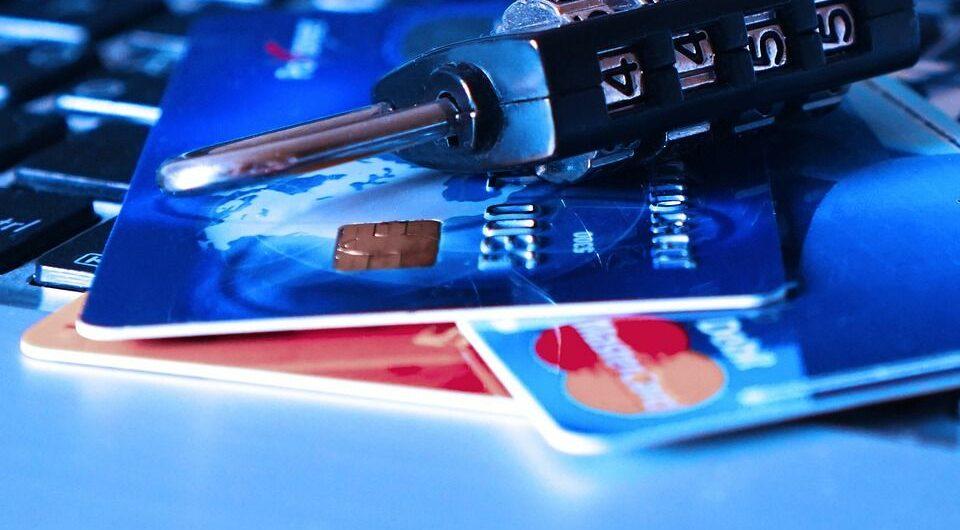How to Reduce Credit Score Damage if You’re an Identity Theft Victim

Identity theft victims often feel violated. After all, someone impersonated them in an attempt to drain their bank accounts, use their credit cards or open fraudulent new credit accounts. Victims are left to face the challenge of how to recover from identity theft, often without help.
It’s crucial to resolve fraudulent accounts and charges promptly. Just for a start, you need to change all your passwords and inform your creditors that you were the victim of identity theft. On top of that, you might have to address some damage to your credit score from identity theft.
The question is – how do you bounce back from identity theft, minimize the damage to your credit score and rebuild your credit again?
Whether you have experienced identity theft first-hand or are concerned that it might happen to you, this guide will help you win back your identity – and your good credit.
Types of Identity Theft
According to the U.S. government, there are many types of identity fraud.
These include:
- Tax identification theft, where someone uses your Social Security number to file false tax returns.
- Medical identification theft, in which criminals steal your Medicare or health insurance identity to obtain medical services.
- Military identity theft
- Social media identity theft
- Credit card and bank account fraud
Of these, credit card and bank account fraud are the most well-known types of identity fraud and can involve both new and existing accounts. Criminals are always working to get the greatest financial gain possible from these types of fraud.
Victims and perpetrators
While there are some situations when immediate suspicious activity makes it clear you’re a victim of identity theft, in other situations it may take longer to realize what happened.
For example, if you get a notice that you’ve been denied a loan application or credit card application, a bill for items you didn’t purchase, or calls from debt collection companies for debts you don’t recognize, then you may possibly be a victim of identity theft.
The most vulnerable targets of this type of theft include children, college students and senior citizens. Though, truth be told, anyone can become the target of an identity thief.
Unfortunately, perpetrators may be people in your family and social circles. Cases of parents stealing the identity of their children for financial gain are not uncommon. Most perpetrators, however, are criminals looking for an opportunity.
Consequences of Identity Theft
Many victims can tell a nightmarish tale of what happens when someone steals your identity by taking your Social Security number or other personal details. Those who have fallen victim report spending endless hours trying to unravel the theft with financial institutions credit card companies and the IRS.
In many cases, identity theft victims are required to prove that they are the real people associated with the accounts in question and that they didn’t actually open those new accounts.
The process of identity restoration and repairing the damage may take months or even years. Even when you think the matter has finally resolved, the IRS can audit you due to the prior compromise of your Social Security number. In the meantime, your credit score suffers. The significantly lower rating may mean you can’t qualify for loans, a line of credit, or a low interest rate. It may even mean missing out on a new job or housing.
How to report Identity Theft
Identity theft serves up a harsh reality. But if you know the process for reporting the crime, then you may be able to prevent some of the losses and stress associated with the financial damage.
One way to begin the process if you suspect you are a victim of identity theft is to file a formal report with the Federal Trade Commission (FTC). You can go online to IdentityTheft.gov or call the agency at 1-877-438-4338.
The FTC online reporting tool also gives you direct access to a report and identity recovery plan. That’s where you can track your progress in managing and recovering from the event. They also provide form letters that you can print and send to your creditors. Create an account to get access to these valuable recovery services.
You may need to report identity theft to your local police, especially if you know the identity thief or when one or more of your creditors asks you to provide a police report as proof.
With other types of identity theft, you may also have to report to other agencies. For example, you’ll need to contact Medicare (if you have it) and there is proof of medical identity theft. The IRS will need to know if someone has filed a false tax return using your Social Security number and name.
Report identity theft to every financial institution and credit card company with which you do business, and place a credit freeze on your accounts at all three major credit bureaus – Experian, Equifax and TransUnion.
Other steps to take
When you alert the major credit bureaus about identity theft, they can place a fraud alert or security freeze on your account. You may even request that they add an extended fraud alert.
As of September 21, 2018, you can now freeze and unfreeze your credit file for free with all credit reporting agencies. You also can get a free freeze for your children under the age of 16.
Consider taking a proactive approach to monitoring your credit for identity theft as well. Get copies of your credit report from Equifax, TransUnion or Experian to assess the damage. Look for breached accounts, unfamiliar accounts or unauthorized credit accounts opened with your information.
Strategies to fix your credit after Identity Theft
After you’ve filed the necessary reports, it’s time to start repairing the damage and your credit. Be prepared, because it can take years to bring your credit score back to where it was before the identity theft.
Here are some ways to start working towards recovery:
- Make a list of false accounts. When you get copies of your credit reports, the first step is to make a list of all the false accounts and fraudulent activity listed there.
- Write a dispute letter. For each of the false or fraudulent items, write a dispute letter to get them removed. You can find templates for these letters online through the Federal Trade Commission. Be sure to keep copies of each letter you send.
- Keep a log. Take notes and keep records (copies, written communications from the lender in question, etc.) of all actions you are taking to clear up the identity theft.
- Keep monitoring your credit report after. Continue monitoring your credit reports for many months after the event. Some fraudulent accounts may not show up on your credit reports for some time. This can continue to mar your credit, despite your efforts to repair it.
Be ready to rebuild if necessary
Remember that creditors may not always help identity theft victims, even those who didn’t open the accounts in question. Lenders are running a business and this situation may cost you money, but it also costs them money. As such, they may not be willing to give you credit again.
Instead, you may have to rebuild your credit from the ground up. Part of this process may involve pursuing other lines of credit, including a secured credit card with a limited credit line and deposit.
Depending on the extent of the identity theft, you may not be able to fix your credit entirely on your own. If the theft or the losses it causes are especially complex, you may want to hire a law firm that specializes in credit and can represent you in clearing up these fraudulent charges and cleaning up your credit report.
Proactive approaches to reduce Identity Theft risk
Whether you have been a victim of identity theft or you want to minimize the risk, consider implementing these strategies to help protect your credit in future:
- Don’t carry your Social Security card with you. Keep it secure in a safe or lockbox.
- Don’t share personal information just because someone asks for it.
- Don’t leave your mail in your box longer than a day, especially if it doesn’t have a lock. Have the post office hold your mail when traveling.
- Check your accounts online or through an app on a frequent basis.
- Consider using credit monitoring services or identity-protection services.
- Use as many security features on your computer and mobile device as possible.
- Avoid sharing information and doing financial transactions on a public WiFi network.
- Shred paperwork such as receipts, statements, expired credit and bank cards, and anything with your personal information on it.
- Use complex passwords and change them often.
- Get a free credit report and review it regularly. Know your credit history.
- Sign up for fraud alerts for all your credit cards and bank accounts to stop any suspicious activity before it impacts you.
Business Identity Theft
While this guide on identity theft protection focuses on consumers, business owners should also be concerned about protecting company financial information and credit scores. Business identity theft has in fact become so prevalent that the IRS has created an online guide to assist business owners in ID theft protection.
Typically, these cases involve trying to obtain fraudulent tax benefits, but some criminals do go after business bank accounts, business credit cards and databases full of customer personal data. If data breaches include client info, you may face liability for any resulting losses including penalties, fees and lawsuits.
Businesses can use proactive measures to protect their information and that of their customers. Follow the same reporting protocol, including the police, FTC, financial institutions, credit card companies and credit bureaus that you would use to report personal identity theft.
Be vigilant
Identity thieves are always seeking out vulnerabilities. Whether you’re a consumer or a business owner, be alert for suspicious activity and potential vulnerabilities. It’s the best way to get some peace of mind as well as stop these criminals in their tracks.
Thanks for reading! Sign up to get my stories and online courses by clicking here.



